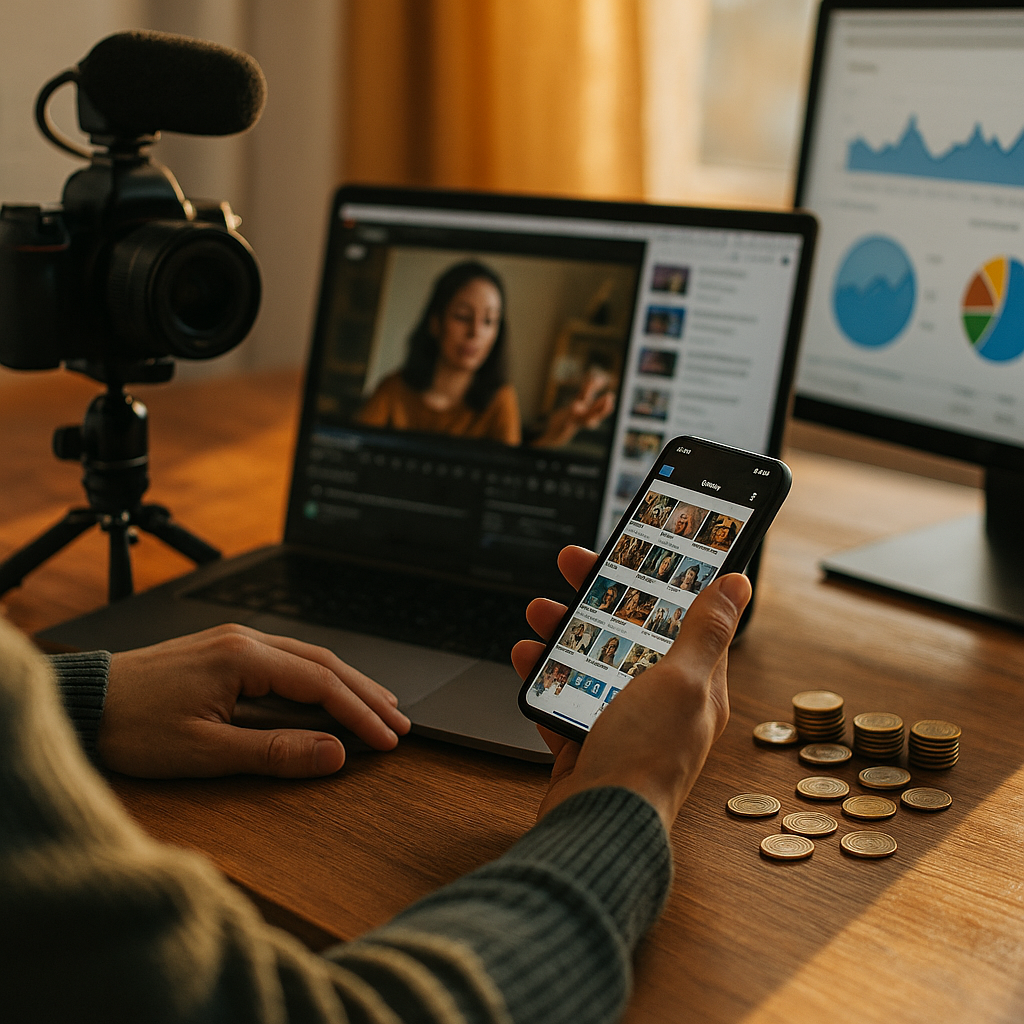The phrase “The Medium is the Message,” coined by Marshall McLuhan, is as relevant as ever in 2025, especially for modern creator platforms. Understanding how the medium shapes content, audience perception, and creator success is essential in today’s digital landscape. How do platforms like TikTok, Substack, and YouTube embody McLuhan’s insights for creators and audiences alike?
The Influence of Medium on Content Creation in 2025
The secondary keyword here is content creation.
Modern content creation platforms each possess unique technological affordances. TikTok’s short video format encourages rapid, visually-driven storytelling. Substack, in contrast, champions long-form writing and direct subscriber relationships. These design choices don’t just tweak the user experience—they fundamentally shape the content produced and the success metrics that matter.
For instance, TikTok’s algorithm rewards immediacy and virality, prompting creators to prioritize current trends, quick editing, and catchy visuals. Meanwhile, Substack’s newsletter model values research, deep dives, and consistency. The medium guides the message, proving McLuhan’s theory daily—what you communicate is deeply influenced by how you communicate it.
Creator Economy: Mediums Shaping Monetization Models
The secondary keyword here is creator economy.
Monetization models are evolving rapidly, and the medium dictates which business models thrive. YouTube’s Partner Program incentivizes creators with ad revenue and channel memberships, prompting creators to optimize for both views and engagement duration. On the other hand, Patreon and Ko-fi provide subscription-based support, favoring niche, loyal audiences.
In 2025, the emergence of decentralized platforms—with blockchain-enabled tip jars and NFTs—adds another layer. These mediums empower direct creator-to-fan commerce, disintermediating traditional networks. The platform you choose isn’t just a stage for your message—it determines how you get paid, the communities you foster, and the creative risks you can afford to take.
Audience Participation: Medium Dictates Engagement Strategies
This section’s secondary keyword is audience engagement.
Modern creator platforms are two-way streets. Instagram’s Stories invite rapid-fire feedback and foster intimate daily connections. Twitch and Kick highlight real-time chat, developing loyal communities that feel present during streams. This shapes how creators write, speak, and connect: concise polls on Instagram, spontaneous Q&As on Twitch, or structured reader letters on Substack.
Data from CreatorIQ’s 2025 landscape survey reveals: platforms with realtime engagement tools boast 47% higher average session durations. Engagement isn’t an afterthought—it’s baked into the medium. If a platform prioritizes comment threads, like Reddit, then in-depth discussion and community curation thrive. The evolution of media isn’t just technological—it’s behavioral, reshaping how creators and audiences relate.
Algorithmic Influence: Platforms as Filters and Amplifiers
Here, we use algorithmic influence as the secondary keyword.
McLuhan warned that media extend and alter human faculties. In 2025, algorithms are the new curators. Whether YouTube’s recommendation engine, TikTok’s For You page, or Instagram’s Explore, algorithms are major selectors of what rises—and what vanishes.
This influence isn’t neutral. Machine-learning models learn from user activity, privilege certain demographics, and amplify specific genres. For creators, this means optimizing content for visibility: concise hooks, vertical video, AB testing thumbnails. Yet it also raises questions about diversity, echo chambers, and the amplification of bias. The platform’s algorithmic logic mediates success—sometimes even more than quality or originality.
Mediated Identities: The Impact on Personal Brand Development
The secondary keyword for this section is personal brand.
Every creator plays to the strengths—and limitations—of their chosen platform. Instagram’s aesthetic emphasis influences creators to develop carefully curated and visually consistent personal brands. On LinkedIn, personal branding leans into thought-leadership through professional commentary. Even emerging VR and metaverse platforms see creators tapping digital avatars and interactive spaces to stand out.
In 2025, personal brands live and die by their ability to leverage their platform’s strengths while mitigating its weaknesses. The medium doesn’t just shape the message—it shapes the messenger. Understanding this is now an essential professional skill for creators, businesses, and organizations alike.
Platform Evolution: Adapting to Shifting Media Landscapes
The secondary keyword here is platform evolution.
No platform remains static. In recent years, creators have seen major algorithm updates, the introduction of AI-driven moderation, and new business tools—each with seismic effects on content visibility and community dynamics. Many creators now build multi-platform presences to hedge against platform volatility.
Understanding this evolution is key: what performs on one channel may fail on another. The smart creator observes, adapts, and predicts—always mindful, as McLuhan taught, that new media are as much about process as product. The only constant is change.
Conclusion: The Medium is Still the Message in the Digital Age
In summary, on today’s creator platforms, the medium shapes not just the content but the culture, business, and identities around it. By understanding and adapting to each medium’s unique logic, informed creators and organizations are best placed to thrive. McLuhan’s insight continues to resonate: mastery of the medium unlocks true creative potential in 2025.
FAQs: McLuhan’s Theory and Modern Creator Platforms
-
What does “The Medium is the Message” mean?
It’s Marshall McLuhan’s idea that the way information is delivered (the medium) shapes the audience’s experience and interpretation more than the message itself. In 2025, this is evident in how each digital platform shapes user behavior and creative outcomes. -
How do modern platforms affect content creation?
Each platform’s technical and social structure guides what kinds of content succeed—be it short videos, newsletters, livestreams, or community posts. The medium shapes storytelling, engagement, and even monetization models. -
Why do creators use multiple platforms?
Diversification helps manage risk. Algorithms, platform policies, and audience demographics change rapidly, so a multi-platform strategy helps maintain reach and brand stability in a fast-evolving digital world. -
How does audience participation vary by platform?
Tools like live chat, polls, or threaded comments influence how creators interact with their audience. Some platforms favor immediacy, others depth—shaping the style and frequency of engagement. -
Are algorithms making it harder for new creators?
Algorithms can both help and hinder. They provide rapid amplification for viral content but may disadvantage those without pre-existing engagement. Understanding platform-specific algorithms is now an essential skill for creator success.
